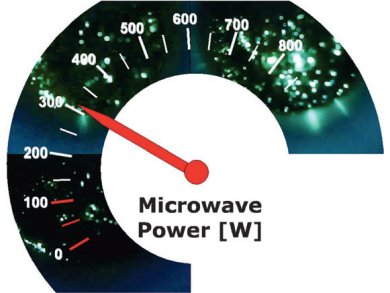Microwave chemistry is efficiently used to shorten reaction times and improve product yields and purities. These unique features have led to an expansion of its applications to metal-containing reactions in organic synthesis and nanomaterial research. However, the effects of microwaves upon metal–solvent mixtures have not been analyzed in detail.
Oliver Kappe and colleagues, Christian Doppler Laboratory for Microwave Chemistry, Austria, have managed to visually observe the effects of microwaves on metal-solvent mixtures. They use a high field-density, sealed-vessel, single-mode 2.45 GHz microwave reactor with a built-in camera and IR thermometer to analyze common metals used in organic chemistry, such as Mg, Zn, Cu, Fe and Ni, upon microwave irradiation.
Using this method, the team determined the dependence of electric discharge phenomena on the microwave power, solvent, metal type, size and morphology. The visual analysis of a previously performed microwave-assisted dehalogenation of 2-chloroethylbenzene in the presence of Fe0, led to the observation of intense arcing phenomena. Due to these observations, an involvement of the arcing phenomena in the dehalogenation process cannot be excluded.
Image: © Wiley-VCH
- Characterization of Microwave-Induced Electric Discharge Phenomena in Metal–Solvent Mixtures,
W. Chen, B. Gutmann, C. O. Kappe,
ChemistryOpen 2012.
DOI: 10.1002/open.201100013




